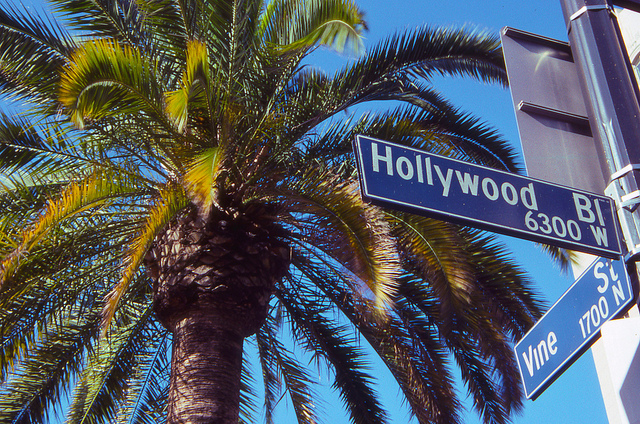
Is there any place in the world that talks about and obsesses over its streets as much as L.A.? The names of our roads have been immortalized in film titles (Sunset Boulevard and Cloverfield) and verse (all Sheryl Crow wanted to do was party “until the sun comes up over Santa Monica Boulevard,” while Tom Petty sang, “I wanna glide down over Mulholland”). But surely some L.A. street names are out of date, and others are simply unoriginal—like Broadway.

So of course we were disappointed when sportscaster Vin Scully rejected the idea of having a street near Dodger Stadium named in his honor. “The mayor of Los Angeles has a great deal more important things to do than name a street after me,” Scully said, apparently disagreeing with Mayor Eric Garcetti, who had proposed it to begin with. Well, the rest of us can’t let this street renaming stuff go. That’s why we asked five Angelenos for some input: If you could rename any street in L.A., which would you choose—and why?
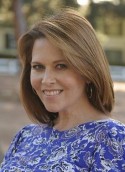
Which San Vicente?
Was it a simple oversight? Did anyone ever think that naming two Los Angeles streets San Vicente Boulevard might trip up a new arrival to the city in 1998, on her way to a job interview? Might cause her to drive up and down the length of it in West Hollywood—with a fluttering Thomas Guide in her lap—looking for an office building in Brentwood. Might even make her pound her fist against the sticky wheel of her forlorn 1982 Volvo wagon and scream, “I can’t go on!”
Surely, I am not the only person who has been duped by the duplicity of San Vicente Boulevard. Both are beautiful thoroughfares with grassy medians. The one that runs through the West Side features four lanes and embraces a delightful line of coral trees, which were planted in the 1950s to replace the Red Line trolley tracks. (FYI: the coastal coral tree is the official tree of Los Angeles.) But such natural beauty becomes a blur of rage when you’re driving along the wrong San Vicente Boulevard, running late.
An easy fix would be to simply rename one of these boulevards. I propose that the San Vicente Boulevard in Brentwood and Santa Monica now be called Coral Tree Way—especially as there is an endowment to care for these vibrant beacons.
Monica Corcoran Harel writes about the culture of keeping up appearances and consults on fashion marketing for films and television.
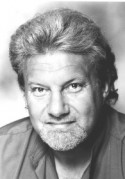
The South shall rise again!!
East Side, West Side—we tend to define our city with an east/west demarcation and hear statements like “I rarely go east of La Brea.” My “hood,” Silverlake, gets called “the West Village of Los Angeles.” Hmm, the West Village on East Side. In our woeful east/west rut we miss a great city that you won’t find downtown or in Santa Monica or even near a beach. And there are many places where the sidewalks don’t have stars, but maybe should.
Let’s head south to 43rd and Central! Risk it. Just like you don’t know Chicago if you don’t know south of the Loop, you don’t know L.A. if you don’t know what’s south of our “loop.” At 43rd and Central stands the Dunbar Hotel. When Los Angeles was a city that practiced de facto segregation, when New York’s Harlem Renaissance flourished, L.A.’s Central Avenue was the home of the classy, black and sassy Dunbar Hotel and places like Club Alabam, the Showboat, the Last Word, and the Downbeat Cafe. Greats like Dizzy Gillespie, Lena Horne, Ray Charles, Billie Holiday, Ella Fitzgerald, Lionel Hampton, Cab Calloway, and Nat King Cole stayed there. And there were other movers and shakers: politicians, an African-American classical ballet company, composers like William Grant Still, and writers like Langston Hughes. Even white folks frequented the Central Avenue jazz scene.
That’s why I think Central Avenue, or at least the blocks around the Dunbar, should be renamed “Jazz Central.” If we listen to the echoes of the past there—maybe we’ll get in the swing and have a 21st-century Harlem Renaissance of our own.
James Koenig is a classical singer, teacher, arts advocate and writer. First published by the University of Chicago Press, he has written theatrical works, poetry, journalistic pieces on classical music and film, performance “translations,” choral texts, and liturgical works. He is also an active arts advocate and has been knighted by the Government of Finland.
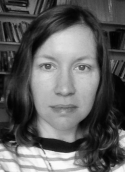
Naming. What a powerful act. As a feminist geographer, I am wary of the politics of naming and the consequences, intended and unintended, that result. Historically, and still, those with status or wealth—rulers, explorers, scientists—often name for themselves. They mark the landscape as theirs: their land, their vision, their language, their power. Other names lie beneath.
When our son was born, in March 2012, we bestowed upon him a name that was the culmination of months of discussion, of combing through family trees, and weighing up family loyalties and betrayals. In the end, we landed on a name that has no family history, only our own history of love. Owen, he is called, a resonant reminder of pre-parental days traveling the Eastern Sierra, and signaling, we hope, a glorious family future. As immigrants from Canada and Poland, respectively, we feel that naming him this way is, in some way, making him; he is our California embodied. This is, perhaps, a lot of weight for a small body to bear.
Naming is powerful like this, creative in the literal sense of the word: giving form to matter, making form matter. Naming is an awesome responsibility. By whose right, by what privilege, am I granted the opportunity to name for others? And what should inform such a decision? The street I choose (knowing the responsibilities and the risks) is Pacific Coast Highway, locally known as PCH. Its swings and roundabouts offer a daily path for so many So-Cal residents, in all our diversity. The length of this stretches all the way home to British Columbia. What would I call it? “Your name here.”
Deborah Thien is a California State University, Long Beach geography professor, spouse, and mother who writes about emotion, gender, health, and place. Her research can be found in scholarly journals like Emotion, Space and Society, and in books like A Companion to Social Geography. She is currently writing a feminist and geographic analysis of PTSD.
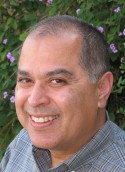
Ah, Los Angeles streets…they vein through my fiction to give my characters getaway routes, roads to love, or just a place to find a good bowl of soup. I simply need to decide where my characters are doing their thing. Driving to the beach for a date? Pico Boulevard will do. Looking to meet a friend at a San Fernando Valley deli? Well, Ventura Boulevard is an easy pick.
But if I could rename any street in Los Angeles, which would I choose, and whom or what would I name it after—and why? Oh, the possibilities! Would I choose the street where I spent the first few years of my life: Dewey Avenue about five miles west of downtown? Or Asman Avenue, the street in West Hills where my wife and I bought our first house and where our son spent his formative years?
I see where this exercise is taking my imagination: home and family. So, okay, I will choose. Asman Avenue, I hereby rename you Isabel Avenue, after my maternal grandmother, Isabel Ruiz Velasco, who passed away thirty years ago in Los Angeles.
She was the only grandparent I had the privilege of knowing, because the other three died before I was born. Isabel was a Mexican immigrant who became a widow in 1959—the year I was born—and had to raise three daughters alone in a little house near USC off of Vermont Avenue. But, as with so many immigrants, she worked hard and provided her children with shelter, education and love. Our son would have enjoyed spending time with Isabel. I know I did.
Daniel A. Olivas is the author of six books including the award-winning novel, The Book of Want (2011). Visit his website and follow him on Twitter @olivasdan.
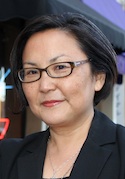
If you were to go to Terminal Island today, you’d see only a shell of its former vitality. At one time, 5,000 men and women—3,000 of them of Japanese ancestry, crowded wooden cannery housing, ventured out into the sea in “ken-ken” jig boats or large fishing boats, cut the heads off of albacore, and canned cooked fish. One of the last tuna canneries on the island, Chicken of the Sea, closed its operation in 2001.
In February 1942, when President Franklin D. Roosevelt issued Executive Order 9066, allowing for the mass exclusion of Japanese Americans from the West Coast, all Terminal Island residents, including non-Japanese, were given 48 hours to leave the island, homes, and businesses. Those of Japanese ancestry would soon face another forced removal into camps throughout the nation’s interior.
One man who was prescient of the fate that would befall the Japanese Americans on Terminal Island was Kihei Nasu, a secretary of the Southern California Japanese Fishermen’s Association who returned with his wife and five children to his native Japan in 1922. Nasu, educated at an Iowa college and completely bilingual, composed a letter to congressmen participating in a 1920 hearing aimed to limit Japanese immigration. Commenting on the accusation that Japanese fishermen were taking jobs from the native-born, Nasu wrote in the congressional record: “The drudgery and squalor of a fisherman’s life has not appealed greatly to the American citizen, and probably will never will; hence the ranks must be recruited from our foreign population.”
Nasu represents all the men and women who once made their homes in Terminal Island. As a result, I’d name a portion of Seaside Avenue, which borders Fish Harbor, Nasu Way.
Naomi Hirahara is an Edgar Award-winning mystery author and nonfiction writer of regional and Japanese American history. She is currently working on a book on the lost communities of Terminal Island with Geraldine Knatz under Angel City Press for the Port of LA. For more information, see her website.



